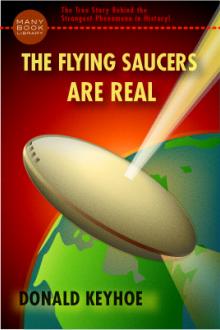The Expression of Emotion in Man and Animals by Charles Darwin (adult books to read TXT) 📕

- Author: Charles Darwin
- Performer: -
Book online «The Expression of Emotion in Man and Animals by Charles Darwin (adult books to read TXT) 📕». Author Charles Darwin
Nor can I discover grounds for believing that any inherited movement, which now serves as a means of expression, was at first voluntarily and consciously performed for this special purpose,—like some of the gestures and the finger-language used by the deaf and dumb.
On the contrary, every true or inherited movement of expression seems to have had some natural and independent origin.
But when once acquired, such movements may be voluntarily and consciously employed as a means of communication.
Even infants, if carefully attended to, find out at a very early age that their screaming brings relief, and they soon voluntarily practise it. We may frequently see a person voluntarily raising his eyebrows to express surprise, or smiling to express pretended satisfaction and acquiescence. A man often wishes to make certain gestures conspicuous or demonstrative, and will raise his extended arms with widely opened fingers above his head, to show astonishment, or lift his shoulders to his ears, to show that he cannot or will not do something.
The tendency to such movements will be strengthened or increased by their being thus voluntarily and repeatedly performed; and the effects may be inherited.
It is perhaps worth consideration whether movements at first used only by one or a few individuals to express a certain state of mind may not sometimes have spread to others, and ultimately have become universal, through the power of conscious and unconscious imitation. That there exists in man a strong tendency to imitation, independently of the conscious will, is certain.
This is exhibited in the most extraordinary manner in certain brain diseases, especially at the commencement of inflammatory softening of the brain, and has been called the “echo sign.”
Patients thus affected imitate, without understanding every absurd gesture which is made, and every word which is uttered near them, even in a foreign language.[1] In the case of animals, the jackal and wolf have learnt under confinement to imitate the barking of the dog. How the barking of the dog, which serves to express various emotions and desires, and which is so remarkable from having been acquired since the animal was domesticated, and from being inherited in different degrees by different breeds, was first learnt we do not know; but may we not suspect that imitation has had something to do with its acquisition, owing to dogs having long lived in strict association with so loquacious an animal as man?
[1] See the interesting facts given by Dr. Bateman on `Aphasia,’ 1870, p. 110.
In the course of the foregoing remarks and throughout this volume, I have often felt much difficulty about the proper application of the terms, will, consciousness, and intention. Actions, which were at first voluntary, soon became habitual, and at last hereditary, and may then be performed even in opposition to the will.
Although they often reveal the state of the mind, this result was not at first either intended or expected. Even such words as that “certain movements serve as a means of expression” are apt to mislead, as they imply that this was their primary purpose or object.
This, however, seems rarely or never to have been the case; the movements having been at first either of some direct use, or the indirect effect of the excited state of the sensorium.
An infant may scream either intentionally or instinctively to show that it wants food; but it has no wish or intention to draw its features into the peculiar form which so plainly indicates misery; yet some of the most characteristic expressions exhibited by man are derived from the act of screaming, as has been explained.
Although most of our expressive actions are innate or instinctive, as is admitted by everyone, it is a different question whether we have any instinctive power of recognizing them. This has generally been assumed to be the case; but the assumption has been strongly controverted by M. Lemoine.[2] Monkeys soon learn to distinguish, not only the tones of voice of their masters, but the expression of their faces, as is asserted by a careful observer.[3] Dogs well know the difference between caressing and threatening gestures or tones; and they seem to recognize a compassionate tone. But as far as I can make out, after repeated trials, they do not understand any movement confined to the features, excepting a smile or laugh; and this they appear, at least in some cases, to recognize.
This limited amount of knowledge has probably been gained, both by monkeys and dogs, through their associating harsh or kind treatment with our actions; and the knowledge certainly is not instinctive.
Children, no doubt, would soon learn the movements of expression in their elders in the same manner as animals learn those of man.
Moreover, when a child cries or laughs, he knows in a general manner what he is doing and what he feels; so that a very small exertion of reason would tell him what crying or laughing meant in others.
But the question is, do our children acquire their knowledge of expression solely by experience through the power of association and reason?
As most of the movements of expression must have been gradually acquired, afterwards becoming instinctive, there seems to be some degree of a priori probability that their recognition would likewise have become instinctive.
There is, at least, no greater difficulty in believing this than in admitting that, when a female quadruped first bears young, she knows the cry of distress of her offspring, or than in admitting that many animals instinctively recognize and fear their enemies; and of both these statements there can be no reasonable doubt.
It is however extremely difficult to prove that our children instinctively recognize any expression. I attended to this point in my first-born infant, who could not have learnt anything by associating with other children, and I was convinced that he understood a smile and received pleasure from seeing one, answering it by another, at much too early an age to have learnt anything by experience. When this child was about four months old, I made in his presence many odd noises and strange grimaces, and tried to look savage; but the noises, if not too loud, as well as the grimaces, were all taken as good jokes; and I attributed this at the time to their being preceded or accompanied by smiles. When five months old, he seemed to understand a compassionate, expression and tone of voice.
When a few days over six months old, his nurse pretended to cry, and I saw that his face instantly assumed a melancholy expression, with the corners of the mouth strongly depressed; now this child could rarely have seen any other child crying, and never a grown-up person crying, and I should doubt whether at so early an age he could have reasoned on the subject.
Therefore it seems to me that an innate feeling must have told him that the pretended crying of his nurse expressed grief; and this through the instinct of sympathy excited grief in him.
[2] `La Physionomie et la Parole,’ 1865, pp. 103, 118.
[3] Rengger, `Naturgeschichte der Saugethiere von Paraguay,’ 1830, s. 55.
M. Lemoine argues that, if man possessed an innate knowledge of expression, authors and artists would not have found it so difficult, as is notoriously the case, to describe and depict the characteristic signs of each particular state of mind.
But this does not seem to me a valid argument.
We may actually behold the expression changing in an unmistakable manner in a man or animal, and yet be quite unable, as I know from experience, to analyse the nature of the change.
In the two photographs given by Duchenne of the same old man (Plate III. figs. 5 and 6), almost every one recognized that the one represented a true, and the other a false smile; but I have found it very difficult to decide in what the whole amount of difference consists. It has often struck me as a curious fact that so many shades of expression are instantly recognized without any conscious process of analysis on our part.
No one, I believe, can clearly describe a sullen or sly expression; yet many observers are unanimous that these expressions can be recognized in the various races of man. Almost everyone to whom I showed Duchenne’s photograph of the young man with oblique eyebrows (Plate II. fig. 2) at once declared that it expressed grief or some such feeling; yet probably not one of these persons, or one out of a thousand persons, could beforehand have told anything precise about the obliquity of the eyebrows with their inner ends puckered, or about the rectangular furrows on the forehead.
So it is with many other expressions, of which I have had practical experience in the trouble requisite in instructing others what points to observe. If, then, great ignorance of details does not prevent our recognizing with certainty and promptitude various expressions, I do not see how this ignorance can be advanced as an argument that our knowledge, though vague and general, is not innate.
I have endeavoured to show in considerable detail that all the chief expressions exhibited by man are the same throughout the world.
This fact is interesting, as it affords a new argument in favour of the several races being descended from a single parent-stock, which must have been almost completely human in structure, and to a large extent in mind, before the period at which the races diverged from each other.
No doubt similar structures, adapted for the same purpose, have often been independently acquired through variation and natural selection by distinct species; but this view will not explain close similarity between distinct species in a multitude of unimportant details.
Now if we bear in mind the numerous points of structure having no relation to expression, in which all the races of man closely agree, and then add to them the numerous points, some of the highest importance and many of the most trifling value, on which the movements of expression directly or indirectly depend, it seems to me improbable in the highest degree that so much similarity, or rather identity of structure, could have been acquired by independent means.
Yet this must have been the case if the races of man are descended from several aboriginally distinct species. It is far more probable that the many points of close similarity in the various races are due to inheritance from a single parent-form, which had already assumed a human character.
It is a curious, though perhaps an idle speculation, how early in the long line of our progenitors the various expressive movements, now exhibited by man, were successively acquired. The following remarks will at least serve to recall some of the chief points discussed in this volume.
We may confidently believe that laughter, as a sign of pleasure or enjoyment, was practised by our progenitors long before they deserved to be called human; for very many kinds of monkeys, when pleased, utter a reiterated sound, clearly analogous to our laughter, often accompanied by vibratory movements of their jaws or lips, with the corners of the mouth drawn backwards and upwards, by the wrinkling of the cheeks, and even by the brightening of the eyes.
We may likewise infer that fear was expressed from an extremely remote period, in almost the same





Comments (0)